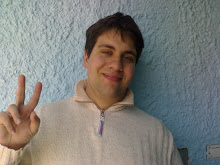Ruggiero Giuseppe Boscovich, 1711-1787
As Athanasius Kircher dominated seventeenth-century Jesuit science, Ruggiero Giusseppe Boscovich was pre-eminent among Jesuit scientists of the eighteenth century. But whereas Kircher's books are regarded today as primarily curiosities, the work of Boscovich in astronomy, optics, mathematics and engineering remains in high repute. Born in Ragusa, he was a professor of mathematics at several institutions, including the Roman College, where he planned the observatory. He suggested and directed the draining of the Pontine marshes near Rome, and recommended the use of iron bands to control the spread of cracks in the dome of St. Peter's basilica. He was instrumental in softening ecclesiastical hostility to the Copernican system, and helped popularize the theories of Newton.
Parere di tre mattematici sopra i danni, che si sono trovati nella cupola de S. Pietro sul fine dell'anno MDCCXLII, data per ordine di Nostro Signore Papa Benedetto XIV. (Rome, 1743?)
These engravings show a) the system devised by Boscovich to repair the dome of St. Peter's, and b) one of the many optical instruments he invented.
Dome of St. Peters | Optical Device |
Guillame-Hyacinthe Bougeant, 1690-1743
A philosophical amusement upon the language of beasts... (Dublin, 1739)
A translation of the author's Amusements philosophique sur le langage des bestes. This light-hearted refutation of Descarte's opinions regarding communication among animals eventually landed the author in prison.
Jacopo Belgrado, 1704-1789
Belgrado was court mathematician and confessor to Duke Philoppo at Parma, where he also established an observatory. He wrote widely on heat, geometry and the still relatively unexplored phenomenon of electricity.
I fenomeni elettrici, con i corollarj da lor dedotti, e con i fonti di ciò che rende malagevole la ricerca del principio elettrico... (Parma, 1749)Journal de Trévoux ou Mémoires pour servir à l'histoire des sciences et des arts. (Trévoux, Lyon or Paris, 1701-1767; reprinted Geneva, 1968)
This monthly journal review of the arts, sciences and letters was established by Jesuits Jacques Philippe Lallemant and Michel Le Tellier in 1701. At first, the concentration was on abstracts and reviews of current books, but gradually it broadened its scope until by the middle of the century the Journal de Trévoux included evaluations of the major intellectual themes of the age. Although often considered merely as the mouthpiece of the Church against the French philosophes, the journal provided a forum for much valid original scientific research by jesuits and others. The engraving illustrates a total eclipse of the sun observed by Jesuit astronomers at Avignon in May, 1706.









Nessun commento:
Posta un commento